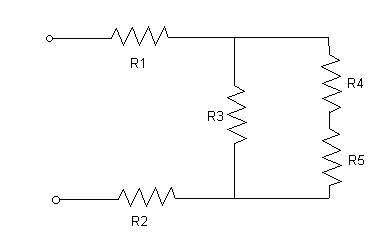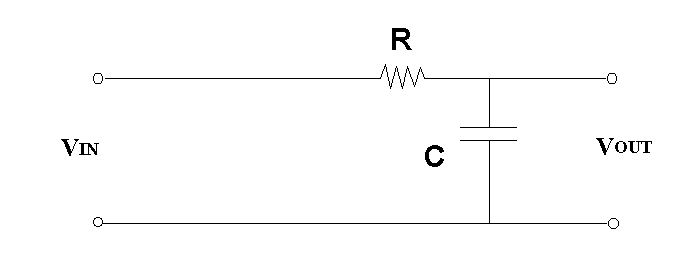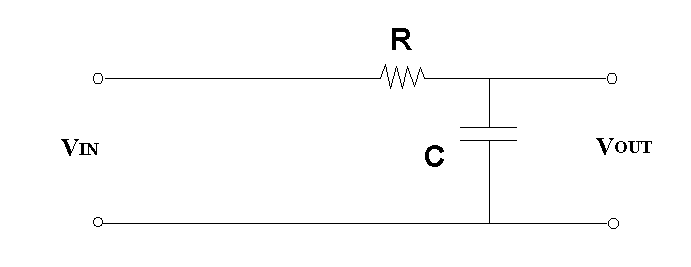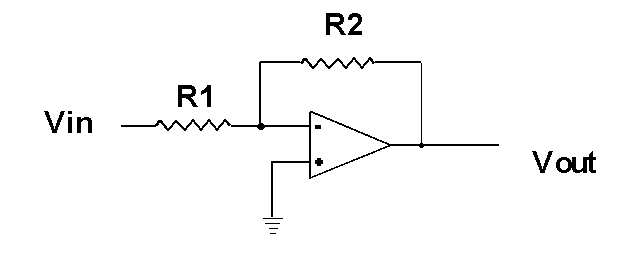Electronics Homework Problem Set b
This problem set was developed by S.E. Van Bramer for Chemistry 366 at Widener University.
The following questions are adapted from Diefenderfer Principles of Electronic Instrumentation, Saunders, 1994.
- What is the maximum voltage that should be applied to a 100 kOhm, 5 W resistor? How much current does this provide? What is the maximum voltage that should be applied to a 5 kOhm 1/4 W resistor? How much current does this provide?
- What power rating is required if 12 V is applied to a 50 Ohm resistor? A 50 kOhm resistor?
- If 25 V is applied to the circuit shown below. R1 = 10 Ohm, R2 = 50 Ohm, R3 = 25 Ohm, R4 = 15 Ohm, R5 = 10 Ohm, what is the current through the R4.

- Calculate the amplitude and phase of the signal out for the circuit below when Vin = 2.0 V 20 kHz, R = 10 kOhm, C = 2000 pF.. Plot vout/vin (vout is taken across the capacitor) versus the log of frequency from 10 Hz to 1 MHz. Plot the log of vout/vin versus the log of frequency.

- For the circuit below, at what frequency is vout/vin = 0.50 when R = 22k and C = 0.22 microF?

- For the circuit shown below, write an equation that describes Vout as a function of Vin. If R1=20k, R2=50k and the amplifier is a LM741A Op-amp. What is the maximum and minimum voltage this circuit can provide? What is the maximum (short circuit) current that his circuit can provide? What is the highest frequency signal (bandwidth) this circuit can respond to? (Hint; you will need to look up the specifications for this Op-amp.)

Please send comments or suggestions to svanbram@science.widener.edu
Scott Van Bramer
Department of Chemistry
Widener University
Chester, PA 19013
© copyright 1996, S.E. Van Bramer
This page has been accessed
times since 1/5 /96 .
Last Updated: 1/7/2004







